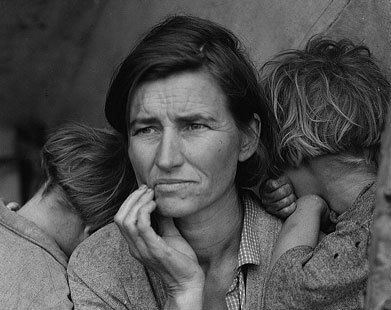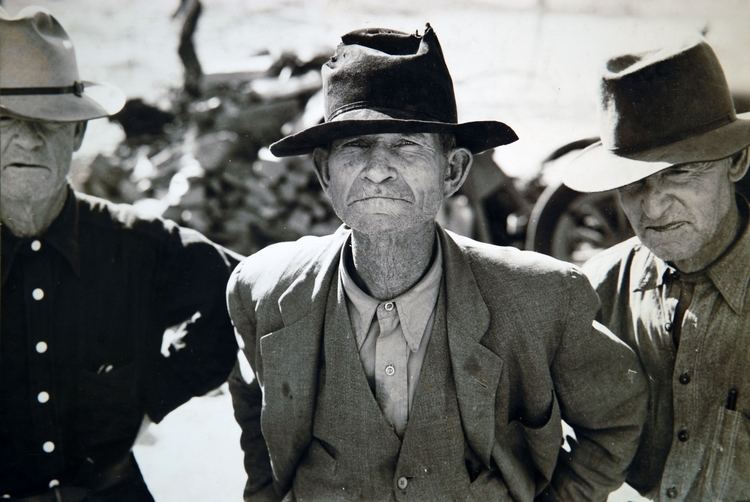Name Roy Stryker | Role Photographer | |
 | ||
Occupation economist, government official, and photographer Books In This Proud Land America Nineteen Thirty-Five to Nineteen Forty-Three As Seen in the Farm Security Administration Photographs | ||
Roy stryker photography and the great depression
Roy Emerson Stryker (November 5, 1893 – September 27, 1975) was an American economist, government official, and photographer. He headed the Information Division of the Farm Security Administration (FSA) during the Great Depression, and launched the documentary photography movement of the FSA.
Contents
- Roy stryker photography and the great depression
- Introducing america to americans roy stryker and the fsa photographs
- Life
- References

Introducing america to americans roy stryker and the fsa photographs
Life

After serving in the infantry in World War I, Stryker went to Columbia University where he studied economics. He used his photography to illustrate his economics texts and lectures. At Columbia, he worked with Rexford Tugwell, and when Tugwell became part of the Resettlement Administration, Stryker followed him. Tugwell and Stryker refocused the attention of the Resettlement Administration to document the problems of the heartland, and in 1935 Stryker became the head of the Historical Section (Information Division) of the RA. The RA was renamed the Farm Security Administration, and Stryker set up the photodocumentary project.

Stryker was a manager of the FSA's photographic project. The photographers involved attested to the fact that Stryker was expert at getting good work out of them. He made sure that the photographers were well briefed on their assigned areas before being sent out, and he ensured that they were properly funded. However, Stryker has been criticized for his heavy-handed editing methodology, which involved physically defacing negatives by punching holes in them. Stryker also made sure that mainstream publications had access to FSA photographs. This both helped focus public attention on the plight of the rural poor and set up the commercial careers of his photographers. Overall, from 164,000 developed negatives some 77,000 different finished photographic prints were made for the press, plus 644 color images.

Photographers hired by Stryker for the FSA included Dorothea Lange, Arthur Rothstein, Walker Evans, Ben Shahn, John Vachon, Marion Post Wolcott, Russell Lee, Jack Delano, Gordon Parks, John Collier, Carl Mydans, and Edwin and Louise Rosskam.
During World War II, the photographic unit of the FSA was reassigned to the Office of War Information and put to more propagandistic uses for one year, and then disbanded. At the same time, the US Congress disbanded the FSA, and the holdings of the FSA's photographic unit were transferred to the Library of Congress.
Stryker resigned and went to work for Standard Oil in its public relations documentary project from 1943 to 1950. In selecting photographers for projects at Standard Oil (SO), Stryker sought those who possessed what he described as an "insatiable curiosity, the kind that can get to the core of an assignment, the kind that can comprehend what a truck driver, or a farmer, or a driller or a housewife thinks and feels and translate those thoughts and feelings into pictures that can be similarly comprehended by anyone."
Photographers on the SO project included, among others: Berenice Abbott, Gordon Parks and Todd Webb; as well as Esther Bubley, Harold Corsini, Russell Lee, Arnold S. Eagle, Elliott Erwitt and Sol Libsohn, who would later follow Stryker to his next project in Pittsburgh, Pennsylvania. After suggesting topics he wanted documented, Stryker gave his photographers the freedom to pursue their individual approaches to their subjects. As with all his projects, Stryker was adamant that his staff understand their subjects and their context before going out on an assignment.
From 1950 to 1952, Stryker worked to establish the Pittsburgh Photographic Library (PPL). In 1960, the collection was transferred to the Carnegie Library of Pittsburgh.
After leaving the PPL, Stryker directed a documentation project at Jones & Laughlin Steel Corporation. Thereafter, he accepted consulting jobs on occasion and conducted seminars on photo-journalism at the University of Missouri. Stryker eventually returned to the west in the 1960s. He died in Grand Junction, Colorado.
The Roy Stryker Papers, including manuscripts, correspondence, and vintage prints from the Stryker-directed projects—Farm Security Administration (FSA), the Standard Oil (New Jersey) Co. and Jones & Laughlin Steel—are held in Photographic Archives, Archives and Special Collections, University of Louisville.
